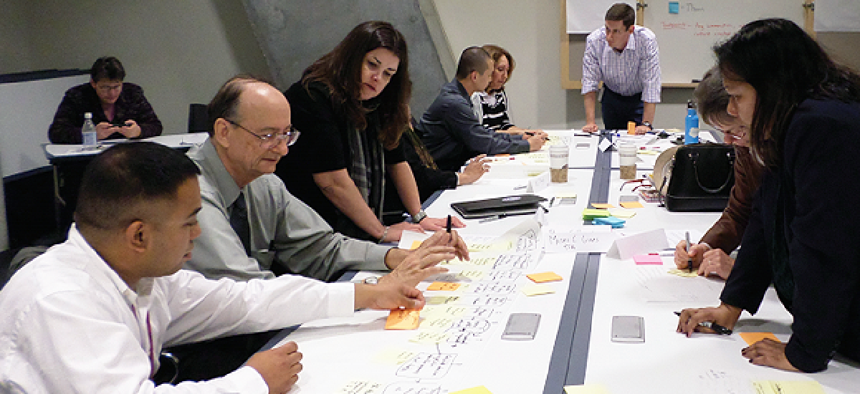What makes innovation labs different?


Connecting state and local government leaders
An Australian public servant visited the Office of Personnel Management’s Innovation Lab to see what it had in common with other creative spaces.
As governments experiment with innovation labs, sandbox environments and open-source collaboration platforms, the efforts often beg the question, “What are the benefits?”
The Office of Personnel Management’s Innovation Lab, for example, helps agencies develop innovative solutions to workforce problems and find new ways of delivering services and programs through human-centric design, an approach focusing on the people who will be using the service.
Alex Roberts, an Australian public servant focusing in government innovation, recently shadowed OPM Innovation Lab Director Stephanie Wade to see how the lab works -- and what it has in common with other creative spaces.
Unlike typical working groups tasked with a specific problem or single project, innovation labs, “as new entities, often play a natural role in acting as brokers and as entry points into large systems for those who are doing new things that don’t naturally align to existing structures and silos within public sector organizations,” Roberts said.
Their newness draws curiosity among agencies, sparking interest in how to adopt, use or work with a similar environment. The lab’s open working space attracts those with unique ideas looking to engage, learn and communicate with others.
The labs expand the innovation ecosystem by creating relationships and serving as an aggregator of new ideas and lessons, Roberts said. The OPM lab, for example, ran monthly training meetings for federal employees interested in human-centered design, connected with other agencies doing similar work and partnered on advanced cross-system solutions for delivering services.
Unlike working groups, the labs allow teams to focus on the entirety of a project rather than a single piece, test capabilities and hypotheses and deploy faster iterations, while ensuring all parties have a shared understanding of the problem and how to address it. They help connect design concepts with the traditional public sector development techniques.
In the process, the labs facilitate an agile development approach. Roberts said he was impressed by the OPM lab’s ability to build a “’supply chain’ of the design outputs to feed their work” into the agile IT development process.
The success of an innovation lab, Roberts said, depends on bringing people in from different disciplines and involving them in the work of the lab. This also creates some challenges, as the lab’s work does not always mix well with existing processes and causes tension between those working in the lab and those following more traditional procedures.
It can be particularly difficult to establish new business and operating models while building a team to manage them, Roberts noted. It requires ongoing education and communication so others can understand the idea and expectations of the lab and how to apply the design techniques.
Ultimately, the friction between the innovation lab and the overall agency environment did not outweigh the benefits of the collaborative, design-based solutions a lab can create, Roberts said.




